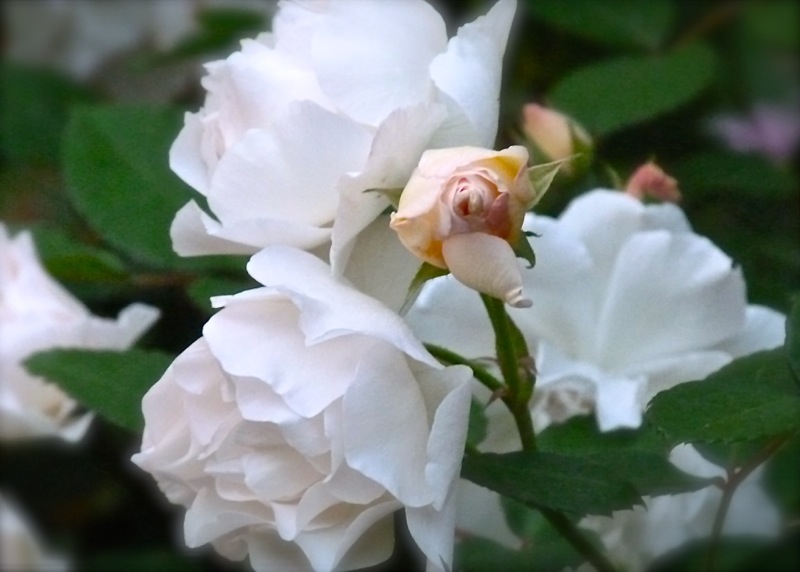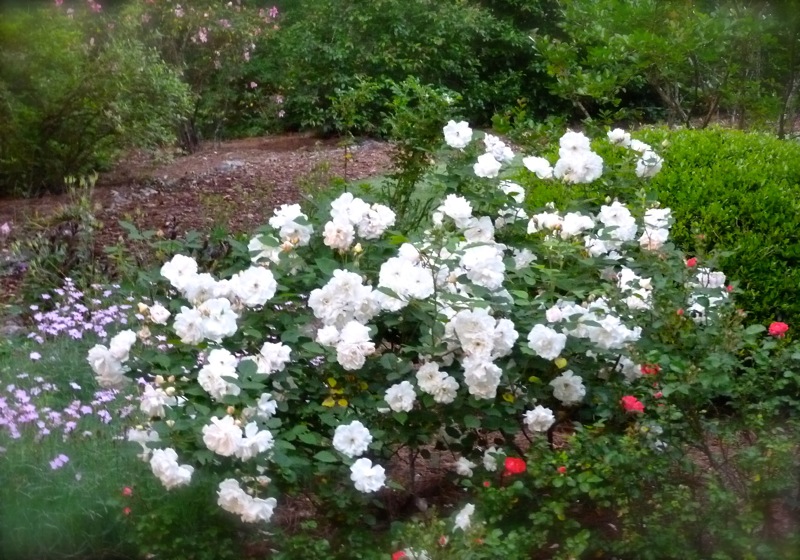Virginia Sweetspire, A Great Native Shrub
 Saturday, May 31, 2014 at 10:10PM
Saturday, May 31, 2014 at 10:10PM I am very pleased with Virginia Sweetspire, Itea virginica. Several of these shrubs grow on the outer edge of my woodland garden, farthest from the house. I almost forgot about them this year, until their abundant 4 inch long tassels of white blooms caught my attention.
How beautiful, I thought as I examined the mildly fragrant racemes of flowers. I have done little for these shrubs since I planted them a couple years ago. How nice that they rewarded me without any fuss.
As lovely as the late spring to early summer flowers are, the most outstanding feature of this deciduous shrub is its fabulous autumn foliage. The names of several popular cultivars reflect that attribute, including 'Henry's Garnet' and 'Merlot.' Itea virginica 'Henry's Garnet' grows in my woodland garden. I love the gorgeous colors of its fall foliage.
Itea virginica 'Henry's Garnet' grows in my woodland garden. I love the gorgeous colors of its fall foliage.
Itea virginica is native to the eastern part of North America, and it reminds me of how little maintenance is required of plants that are indigenous to a region. In the wild, Virginia Sweetspire naturalizes easily. It has an erect form with arching branches.  My young Virginia Sweetspire is about three feet tall.It will spread by root suckers and can form thickets. It is an excellent plant for erosion control. The root-sucking habit is more pronounced in moist soil. If one doesn't want the plant to spread, the suckers can be removed easily.
My young Virginia Sweetspire is about three feet tall.It will spread by root suckers and can form thickets. It is an excellent plant for erosion control. The root-sucking habit is more pronounced in moist soil. If one doesn't want the plant to spread, the suckers can be removed easily.
Growing in planting zones 5 to 9, best color and blooms occur in full sun to light shade. It likes well drained soil rich in humus, but it adapts to clay soil and is tolerant of both wet and dry situations once established. Rootball division is the easiest form of propagation. Depending on the cultivar, Virginia Sweetspire will grow from about 2 to 6 feet tall and wide. For most prolific blooms, fertilize yearly. Pruning may be done for shaping or to control size but otherwise is not necessary. Because it blooms on old wood, or the previous year's growth, any pruning should done right after it blooms. Pruning earlier in the year will remove the flower buds. Of course, dead wood may be removed at any time.
Virginia Sweetspire is a great shrub for the woodland or wildlife garden. The flower nectar attracts butterflies and other pollinating insects, its seeds provide food for birds, and the dense mass of leaves offer cover for wildlife.





